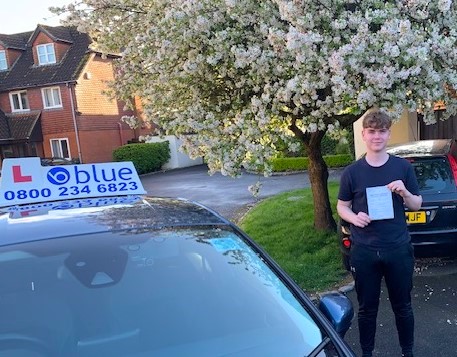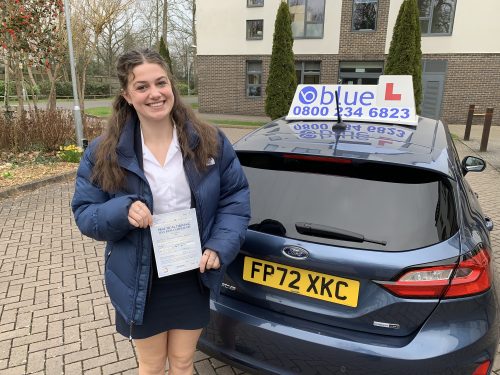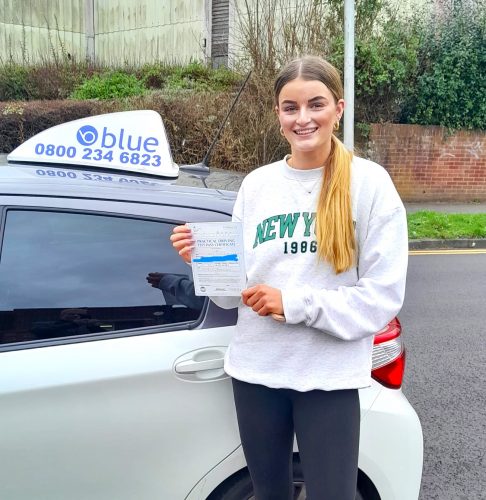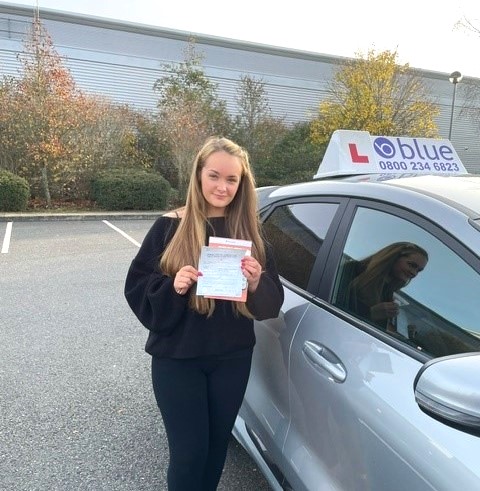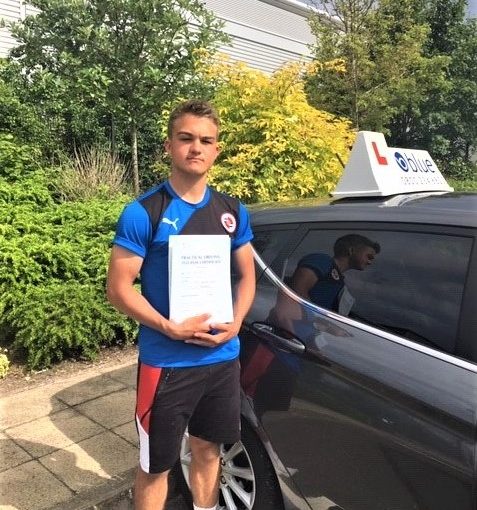
Thomas Nower from Bracknell passed his driving test
Posted in: Mark Brackstone Driving Test Passes, Recommendations from Students.
Congratulations to Thomas Nower from Bracknell on passing your driving test in Farnborough. Thomas passed on his first attempt with just 2 driver faults. Best wishes for the future from Mark Brackstone your driving instructor and all the team at Blue
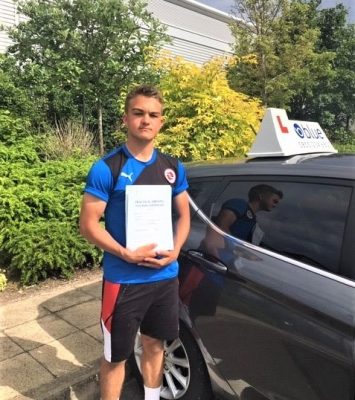
Driving Tips for Driving in Bracknell from Blue
Dual Carriageways.
When crossing or turning right, first assess whether the central reservation is deep enough to protect the full length of your vehicle.
- if it is, then you should treat each half of the carriageway as a separate road. Wait in the central reservation until there is a safe gap in the traffic on the second half of the road
- if the central reservation is too shallow for the length of your vehicle, wait until you can cross both carriageways in one go
- Driving on dual carriageways does not require you to display any driving skills that are fundamentally different to the skills needed on other types of road. However, driving safely on a dual carriageway does require certain rules of etiquette in relation to using lanes that all drivers should be aware of, so that other drivers know what you are intending to do.
Lane discipline
If you need to change lane, first use your mirrors and if necessary take a quick sideways glance to make sure you will not force another road user to change course or speed. When it is safe to do so, signal to indicate your intentions to other road users and when clear, move over.
You should follow the signs and road markings and get into the lane as directed. In congested road conditions do not change lanes unnecessarily. Merging in turn is recommended but only if safe and appropriate when vehicles are travelling at a very low speed, e.g. when approaching road works or a road traffic incident. It is not recommended at high speed.
Single carriageway
Where a single carriageway has three lanes and the road markings or signs do not give priority to traffic in either direction
- use the middle lane only for overtaking or turning right. Remember, you have no more right to use the middle lane than a driver coming from the opposite direction
- do not use the right-hand lane
Where a single carriageway has four or more lanes, use only the lanes that signs or markings indicate.
Dual carriageways
A dual carriageway is a road which has a central reservation to separate the carriageways.
On a two-lane dual carriageway you should stay in the left-hand lane. Use the right-hand lane for overtaking or turning right. After overtaking, move back to the left-hand lane when it is safe to do so.
On a three-lane dual carriageway, you may use the middle lane or the right-hand lane to overtake but return to the middle and then the left-hand lane when it is safe.
- Two-lane Dual Carriageways
- Stay in the left-hand lane, and use the right-hand lane for overtaking other vehicles and if you need to turn right. Once you have overtaken the other vehicle, go back into the left-hand lane as soon as it is safe to do so
- Three-lane Dual Carriageways
- Driving on a dual carriageway with three lanes is essentially the same as driving on a dual carriageway with two lanes, apart from the fact that there is an extra lane, which is used for overtaking purposes. You should stay in the left-hand lane for the majority of the time, and use the middle and right-hand lanes purely overtaking other vehicles. After you’ve overtaken, go back to the left-hand lane once you can safely do so.
Tags: Bracknell passed his driving test





